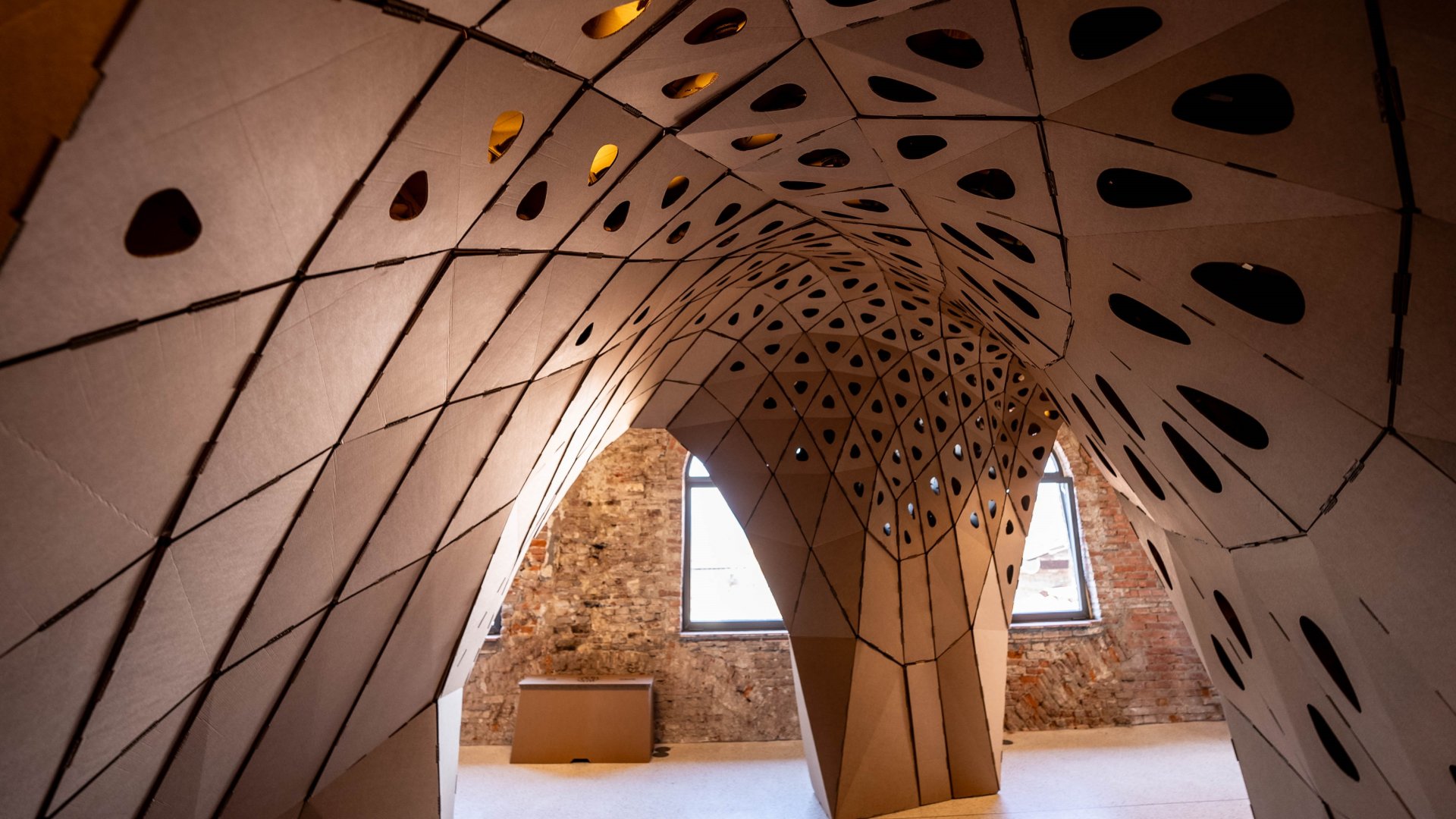‘‘Design Temporariness!’’ at Lucca Biennale Cartasia
Installation by ATI Project, Materieunite and Material Balance Research of Politecnico di Milano at Lucca Biennale Cartasia
For the 2024 edition of Lucca Biennale Cartasia (LuBiCa), a collaboration between ATI Project, Materieunite e Material Balance Research of Politecnico di Milano (POLIMI) led to realization of the installation “Design temporariness!”. The Biennale, opened on June 29, can be visited until September 29.
The collaboration initiated during the workshop ‘’Generative Circularity 2.0’’ held by ATI Project and Materieunite as part of the Master MaBa.Design 2023 led to the Master’s thesis of Federica Pradella, supervised by Prof. Ingrid Maria Paoletti of POLIMI, and Arch.Luca Ofria with ATI Project’s Research and Development Team. The engineering and the production of modules composing the installation were managed by materieunite team under the guidance of the Arch. Alessandro Buffi.
LuBiCa welcomes artists and designers from all over the world to explore and analyze the use of cardboard, a highly versatile material with potential still to be explored. The event highlights the strength of a territory with a long tradition of expertise in materials and processes, facilitating the exchange of knowledge and the common research of innovative solutions.
The general theme of the event, “Here and Now: Tomorrow”, invites to explore the infinite possibilities of human mind, without forgetting the present and our existence in a contemporary context characterized by actions and processes aimed at sustainbale development. The installation aims to physically transpose this dualism through architecture, guiding visitors on a journey across space and time.
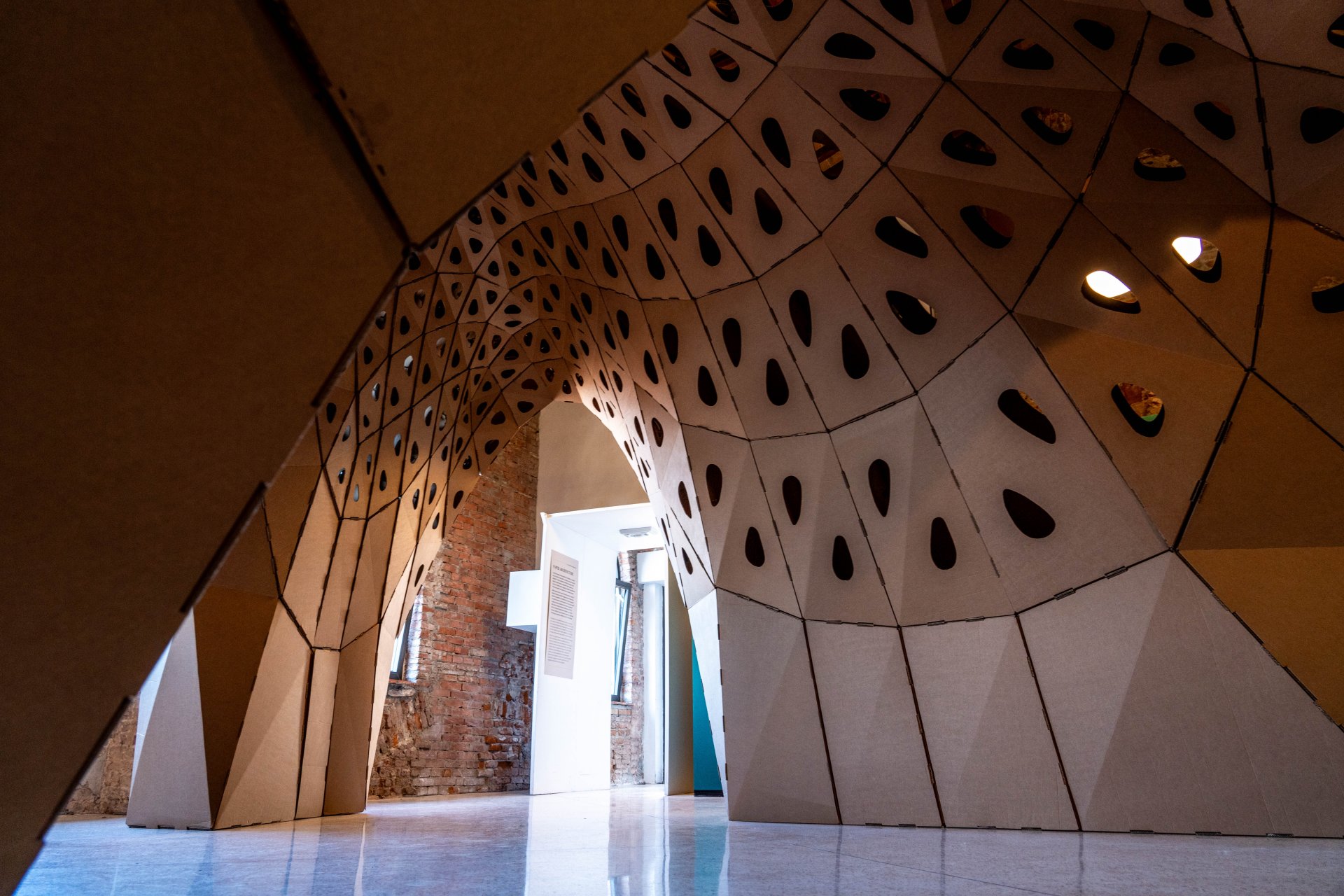
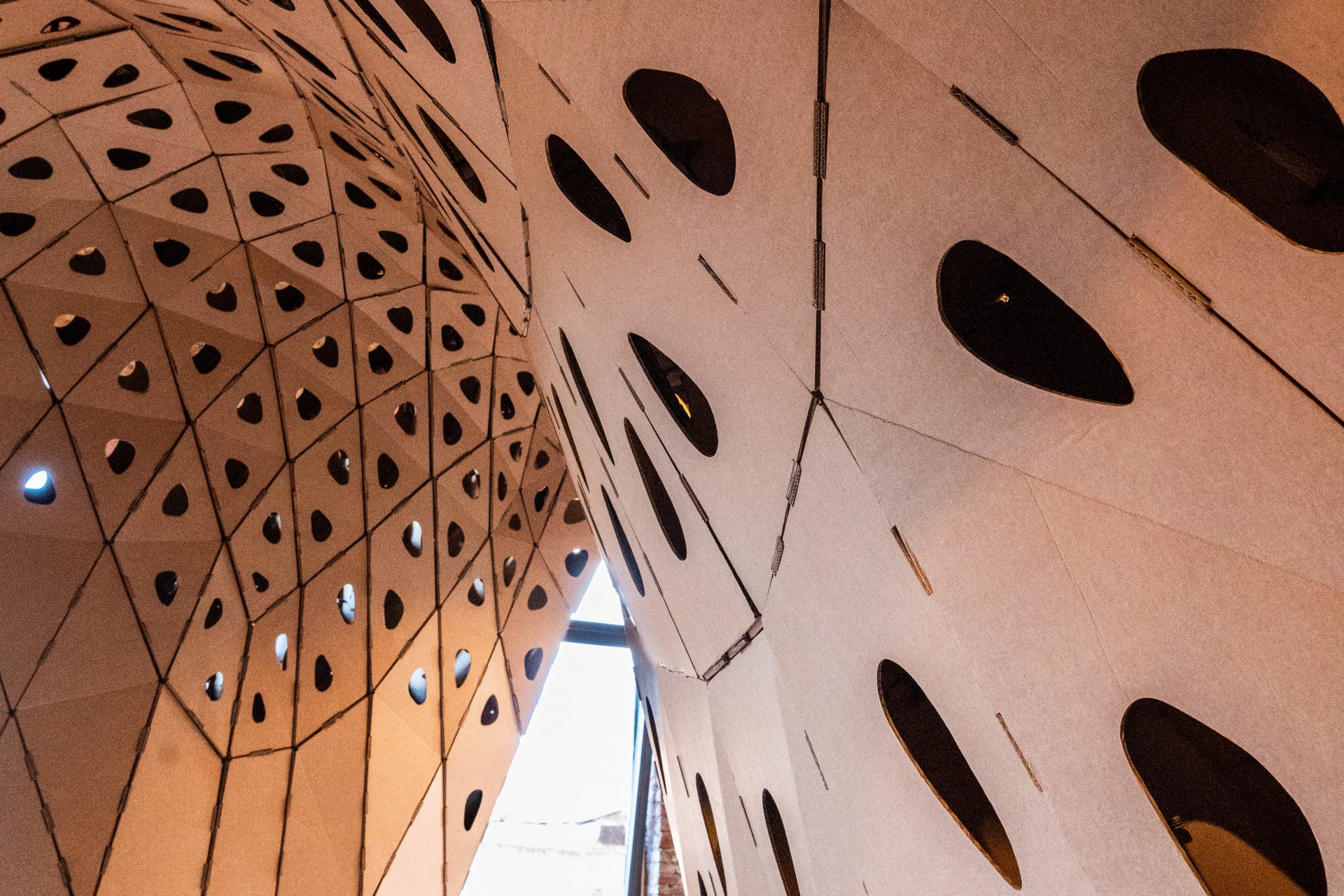
Placed within the historical context of Palazzo Guinigi in the center of Lucca, the exhibition pavilion, Effimero, works as a communication medium for sustainability and circularity, becoming a catalyst for innovation. ‘‘Design Temporariness’’ integretes computational design and the digital fabrication to obtain an adatable system that improves quality and predictability of the final outcome.
The computational work flow combines the generative form-finding to explore a wide range of design possibilities based on selected parameters: evaluation of material to select the one with the best performaces, structural performance analysis to ensure project integrity and lifecycle analysis.

The Design Process
Starting from the creation of a hypothetical environment, parameters were defined as constraints for the formal definition of the pavilion: the centroid, entrance and exit points, windows and openings, anchoring points. This generative approach allowed to achieve a fully controllable geometry. Subsequently, optimization played a crucial role in exploring various typologies and ensuring structural integrity, reducing the use of material for fabrication and assembly, promoting modularity and adaptability.
The box system structure makes the pavilion solid yet lightweight, utilizing the intrinsic strength of the material and the friction provided by connecting adjacent sides. The pavilion’s shape is also optimized for structural resilience.
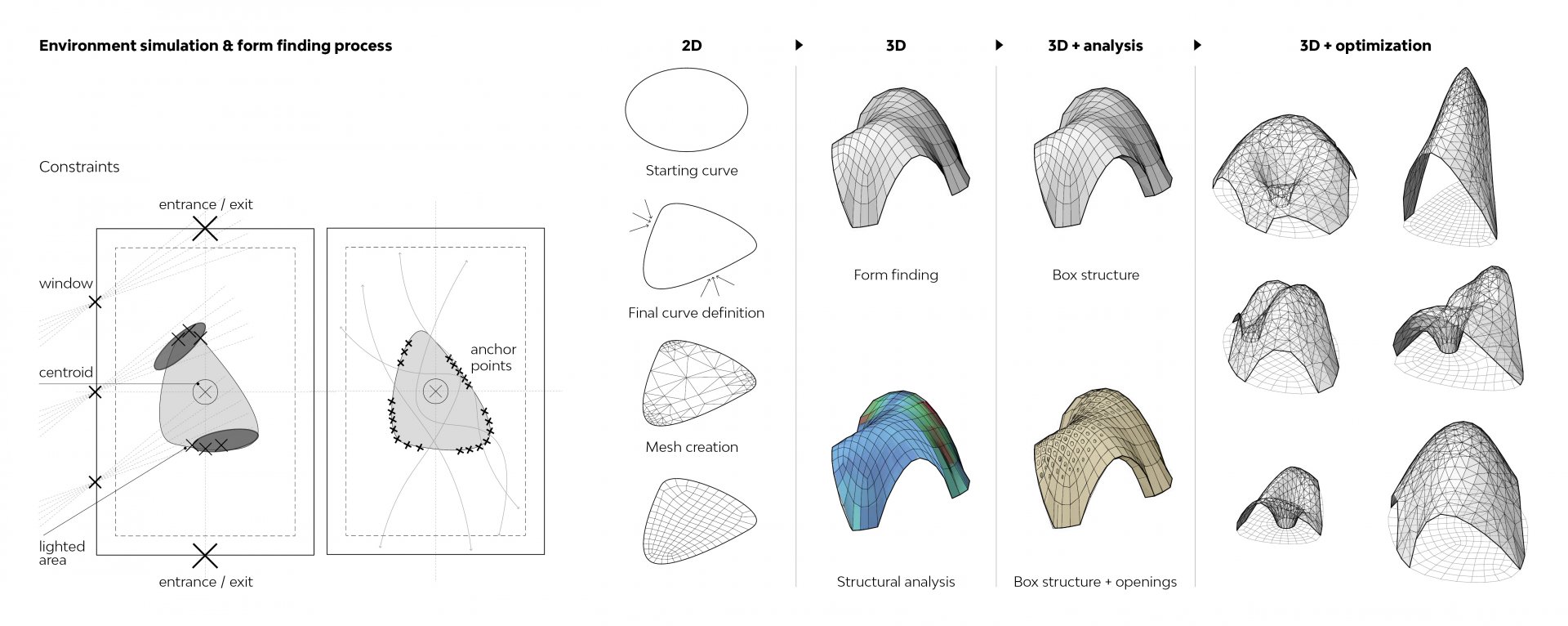
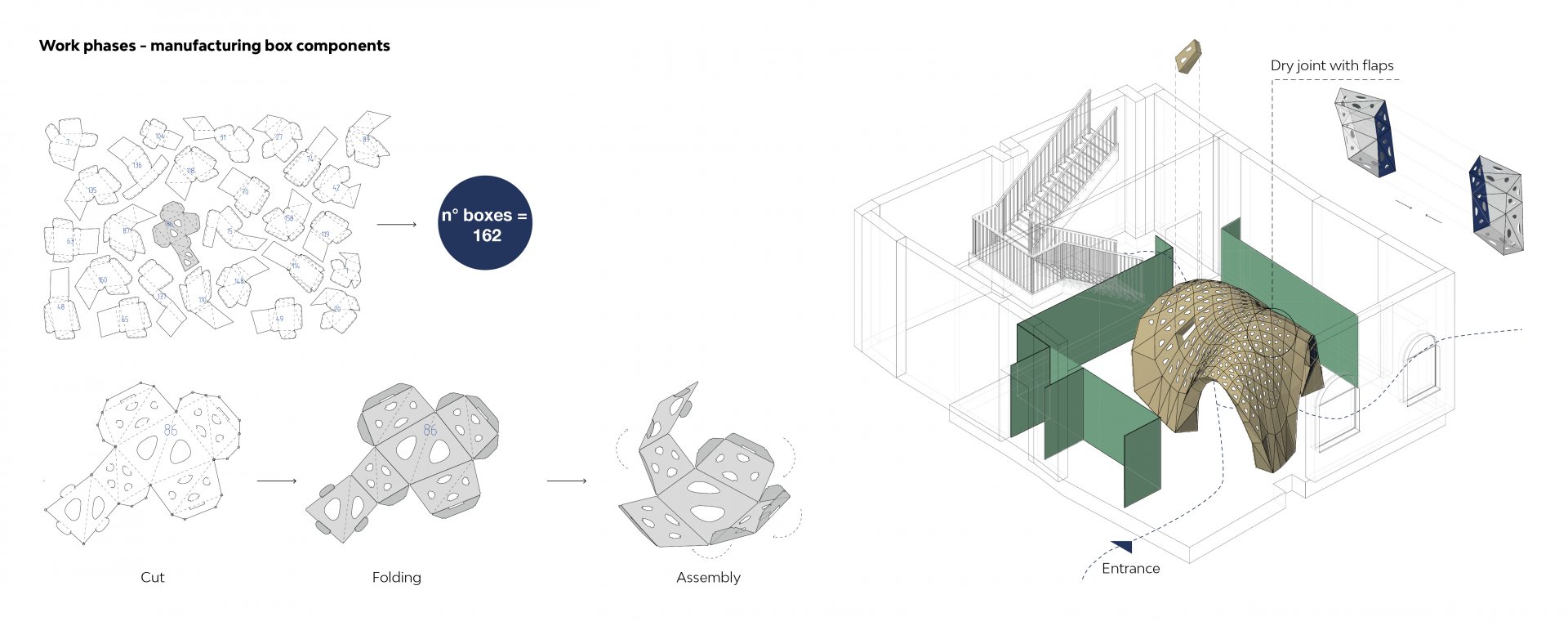
“Design temporariness!” represents a challenge in the development of structures that respond to the surrounding environment, that are adatable to changes and mindful of resource consumption. It acknowledges that the lifespan of a project does not determine its value; ratherm it’s the impact it leaves on its environment, both physically and culturally, that profoundly defines its meaning.
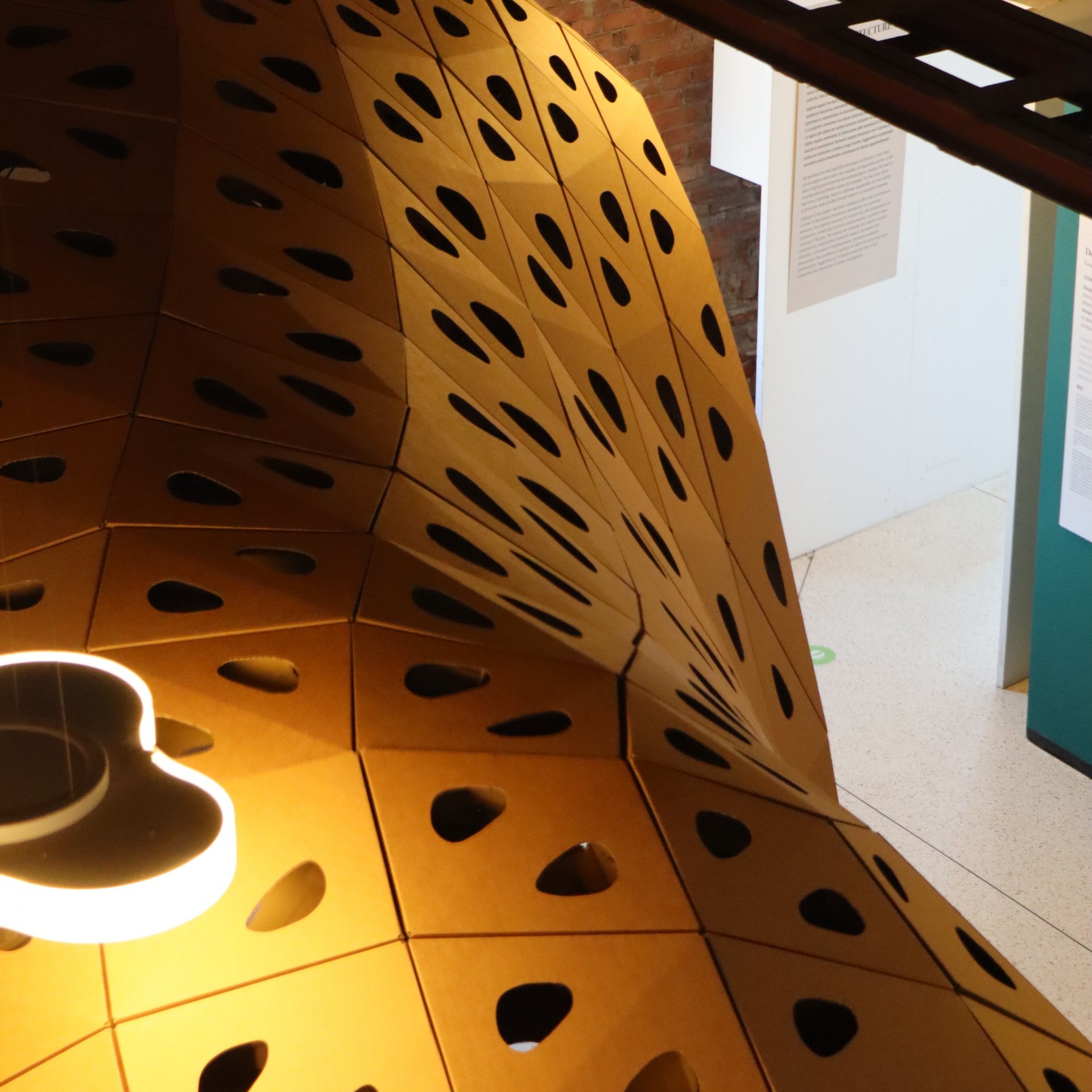

Explore the 3D model
